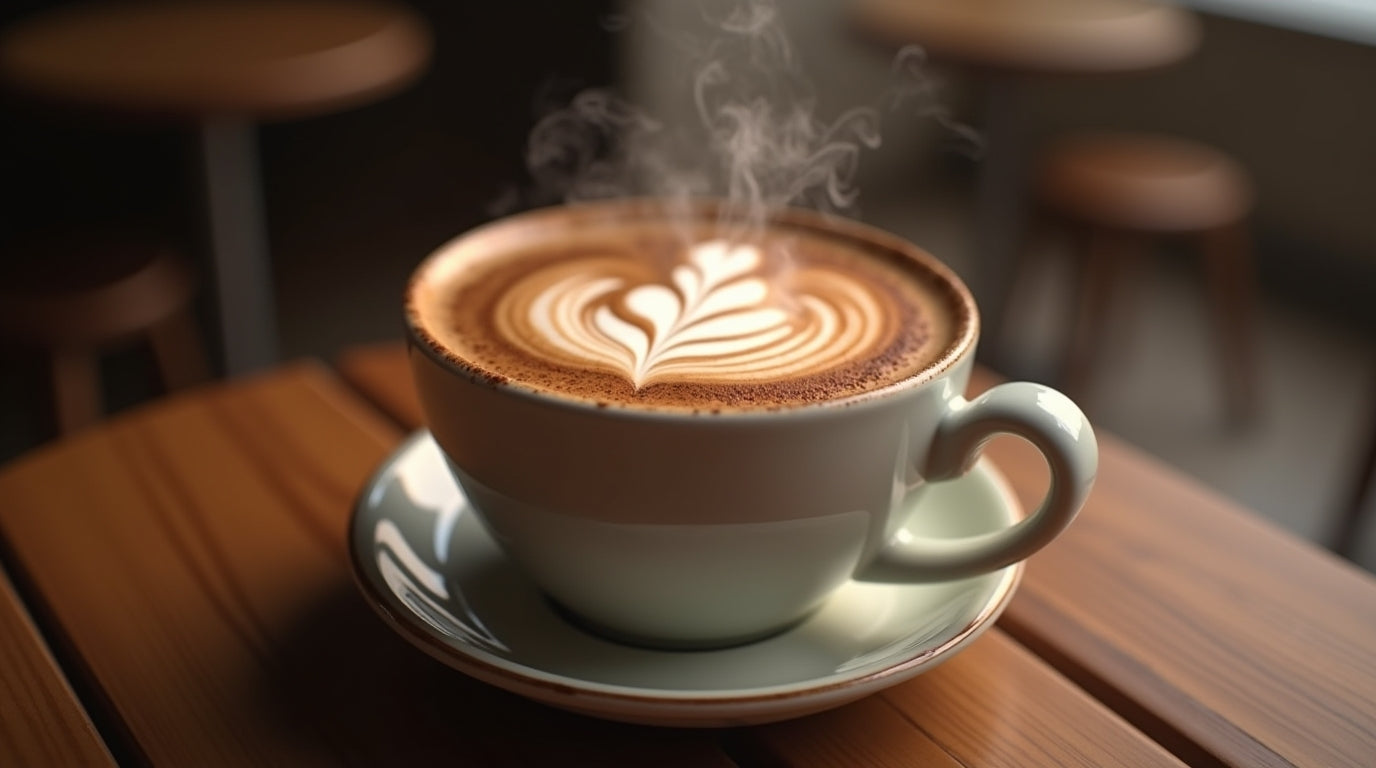
Cacao Caffeine: Understanding the Truth About This Natural Stimulant and Its Unique Energy Profile
The Surprising Truth About Cacao Caffeine Content
Cacao caffeine content has been widely misunderstood and underreported for years. Recent laboratory testing reveals that pure ceremonial cacao contains significantly more caffeine than previously believed – ranging from 60-145mg per serving, comparable to a cup of black tea or even approaching coffee levels. However, the experience of cacao caffeine differs dramatically from coffee due to its unique chemical composition and the presence of theobromine, creating what many describe as a gentler, more sustained energy without the typical caffeine side effects.

The reality is that cacao contains between 6-10 times as much theobromine as it does caffeine. With such a large theobromine to caffeine ratio, the effects of the relatively small amount of caffeine in cacao are modulated by this complementary compound, creating an entirely different energy experience than coffee or tea alone.
Breaking Down the Numbers: How Much Cacao Caffeine Is Really There?
Laboratory Testing Results
Recent comprehensive lab testing has revealed surprising variations in cacao caffeine content:
- Raw Cacao Powder: 12-20mg per tablespoon
- Ceremonial Cacao: 60-145mg per 1oz serving
- Dark Chocolate (70-85%): 20-30mg per 1oz serving
- Cocoa Powder: 8-12mg per tablespoon
Regional Variations Matter
Caffeine levels in cacao significantly vary between countries. In general, cacao from South America and the Caribbean has a lot more caffeine than African cacao:
- Ecuador, Venezuela, Peru: Highest caffeine content
- West African Countries: Lowest caffeine content
- Mexico: Surprisingly low despite proximity to high-caffeine regions
- Seasonal Variations: 15-23% more caffeine in dry season harvests
Comparison to Other Beverages
To put cacao caffeine in perspective:
- Coffee: 95-200mg per 8oz cup
- Black Tea: 50-60mg per 8oz cup
- Green Tea: 25-50mg per 8oz cup
- Yerba Mate: 180mg per traditional serving
- Energy Drinks: 80-150mg per can
Theobromine: The Secret Behind Cacao's Unique Energy
What Makes Theobromine Different
Theobromine differs from caffeine in that it is primarily a smooth-muscle relaxant; it has a greater stimulating effect on the cardiovascular system than it does on the nervous system. This fundamental difference explains why cacao provides energy without the jitters or anxiety often associated with coffee.
The Theobromine-Caffeine Ratio
The cacao husk and bean has been found to hold up to 3% theobromine, with typical ratios showing:
- Average ratio: 9:1 theobromine to caffeine
- Range: 6:1 to 10:1 depending on origin
- Effect: Creates sustained, gentle energy
- Duration: 7-12 hour half-life vs caffeine's 2.5-5 hours
Cardiovascular vs. Nervous System Effects
While caffeine primarily stimulates the central nervous system, theobromine works differently:
- Opens blood vessels for improved circulation
- Increases oxygen delivery to tissues
- Lowers blood pressure despite increased heart rate
- Creates the famous "heart-opening" sensation
Why Cacao Caffeine Feels Different Than Coffee
The Entourage Effect
The phenomenon responsible for this positive turn of events is something that cannabis experts are already familiar with: the so-called "entourage effect." In cacao, multiple compounds work together:
- Caffeine: Provides alertness and focus
- Theobromine: Offers sustained energy and cardiovascular benefits
- Anandamide: The "bliss molecule" for mood enhancement
- Phenylethylamine: Natural mood elevator
- Tryptophan: Precursor to serotonin
Fat-Mediated Absorption
Cacao has a high level of beneficial fats - the cacao butter - that slows down the effects of caffeine in the body. This natural time-release mechanism means:
- Gradual energy increase
- No sudden spike or crash
- Sustained alertness for hours
- Better tolerance for caffeine-sensitive individuals
Complementary Compounds
In a magical way that I have yet to fully understand, it completely changes my body's experience of the caffeine in it. The presence of over 100 bioactive compounds in cacao creates a buffering effect that modulates caffeine's impact.
The Science of Cacao Energy: How It Works in Your Body
Adenosine Receptor Interaction
Both theobromine and caffeine belong to the methylxanthine chemical family. They work by:
- Blocking adenosine receptors in the brain
- Preventing drowsiness signals
- Maintaining alertness and energy
- Different binding patterns create different effects
Blood-Brain Barrier Differences
The extra methyl group present in caffeine that is absent in theobromine is what causes the overstimulation felt when consuming coffee:
- Caffeine: Crosses blood-brain barrier easily
- Theobromine: Limited brain penetration
- Result: Body relaxation with mental clarity
- Experience: Alert calmness vs. jittery energy
Metabolic Pathways
Important enzymes include CYP1A2 and CYP2E1 in processing both compounds:
- Theobromine metabolizes into xanthine
- 10-15% of caffeine converts to theobromine
- Individual genetics affect processing speed
- Explains varying sensitivity levels
Health Benefits of Cacao Caffeine Combination
Cardiovascular Support
Theobromine acts to dilate and widen your blood vessels which improves blood flow, resulting in:
- Lower blood pressure despite mild stimulation
- Enhanced oxygen delivery to tissues
- Improved endothelial function
- Reduced risk of cardiovascular disease
Cognitive Enhancement
The unique stimulant blend in cacao supports:
- Improved focus without hyperactivity
- Better working memory
- Enhanced problem-solving abilities
- Sustained mental performance
Mood and Well-being
Products like Coracao's Raw Fudge Truffle deliver mood benefits through:
- Natural antidepressant effects
- Reduced anxiety compared to coffee
- Enhanced feelings of connection
- Balanced energy throughout the day

Optimal Dosing: Finding Your Cacao Caffeine Sweet Spot
Starting Recommendations
For those new to cacao or sensitive to stimulants:
- Beginners: Start with 10-15g (½ oz) ceremonial cacao
- Regular users: 20-30g (1 oz) standard serving
- Experienced: Up to 40g (1.5 oz) for ceremonies
- Daily maintenance: 5-10g in smoothies or drinks
Timing Considerations
Unlike coffee, cacao's unique profile allows more flexible timing:
- Morning: Full serving for day-long energy
- Afternoon: Half serving without sleep disruption
- Evening: Small amounts (5g) possible for many
- Pre-exercise: 30-45 minutes before activity
Individual Variations
Factors affecting your optimal dose:
- Body weight and metabolism
- Caffeine sensitivity
- Time of day
- Empty vs. full stomach
- Concurrent medications
Comparing Cacao Caffeine Sources
Ceremonial Cacao vs. Cocoa Powder
Understanding the differences helps you choose wisely:
Ceremonial Cacao:
- 60-145mg caffeine per oz
- 300-470mg theobromine per oz
- Minimally processed
- Full nutrient profile retained
Cocoa Powder:
- 8-12mg caffeine per tablespoon
- Lower theobromine content
- Heat-processed
- Some nutrients lost
Dark Chocolate Considerations
For those preferring chocolate form:
- 70% dark: 20-25mg caffeine per oz
- 85% dark: 25-30mg caffeine per oz
- Milk chocolate: 5-10mg per oz
- White chocolate: No caffeine (no cacao solids)
Product Selection Tips
Choose products like Coracao's Salted Caramel Chocolate Bars for:
- Controlled caffeine intake
- Quality ingredient sourcing
- Optimal theobromine ratios
- Sustainable production methods
Managing Cacao Caffeine Sensitivity
Signs of Sensitivity
Unlike coffee jitters, cacao sensitivity may present as:
- Mild headache
- Slight nausea if consumed quickly
- Increased heart rate awareness
- Heightened emotional sensitivity
Adaptation Strategies
If you're sensitive to cacao caffeine:
- Start with very small amounts
- Always consume with food
- Add healthy fats for slower absorption
- Gradually increase over weeks
- Consider evening alternatives
When to Avoid or Limit
Certain conditions warrant caution:
- Pregnancy and nursing (consult provider)
- Heart rhythm disorders
- Severe caffeine sensitivity
- Before medical procedures
- With certain medications
The Cultural and Historical Context
Ancient Understanding
Indigenous cultures intuitively understood cacao's unique properties:
- Reserved for ceremonies and royalty
- Recognized as heart medicine
- Used for sustained energy during travel
- Valued for spiritual connection
Modern Rediscovery
Science now validates traditional wisdom:
- Laboratory testing confirms beneficial ratios
- Research supports cardiovascular benefits
- Studies show cognitive enhancement
- Growing recognition of therapeutic potential
Future Research Directions
Ongoing studies explore:
- Optimal theobromine-caffeine ratios
- Individual genetic variations
- Therapeutic applications
- Enhanced bioavailability methods
Practical Applications: Making Cacao Caffeine Work for You
Daily Energy Management
Create sustainable energy patterns:
- Replace morning coffee gradually
- Use cacao for afternoon energy
- Maintain consistent timing
- Track your response
Performance Enhancement
Athletes and professionals benefit from:
- Pre-workout cacao drinks
- Study session support
- Creative project fuel
- Presentation preparation
Ceremonial and Spiritual Use
Traditional ceremonial doses offer:
- Heart-opening experiences
- Enhanced meditation
- Community connection
- Emotional processing
Troubleshooting Common Concerns
"Why Don't I Feel the Energy?"
Possible reasons and solutions:
- Dose too low: Gradually increase
- Poor quality product: Choose ceremonial grade
- Full stomach: Try empty stomach
- High caffeine tolerance: Take a break
"It Makes Me Too Wired"
If cacao feels overstimulating:
- Reduce serving size
- Add more fat (coconut oil)
- Consume with meals
- Switch to evening-friendly options
"How Do I Know It's Working?"
Look for subtle signs:
- Sustained focus without crashes
- Improved mood stability
- Better exercise endurance
- Enhanced creativity
Conclusion: Embracing Cacao's Unique Energy Profile
Cacao caffeine represents a sophisticated approach to natural energy that honors both ancient wisdom and modern science. With its unique combination of caffeine and theobromine, cacao offers sustained energy, cardiovascular benefits, and mood enhancement without the drawbacks of isolated caffeine consumption. By understanding the true caffeine content and working with cacao's complete profile of beneficial compounds, you can harness this remarkable plant medicine for optimal energy, focus, and well-being in your daily life.

Claire Bennett
I'm Claire, a chocolate lover and artisan based in a small town where I run a tiny home kitchen dedicated to exploring everything chocolate. From single-origin dark bars to creamy ganache and handmade truffles, I find joy in working with all types of chocolate. I believe chocolate has a story, and I love bringing that story to life through humble, heartfelt creations.



Leave a comment
This site is protected by hCaptcha and the hCaptcha Privacy Policy and Terms of Service apply.